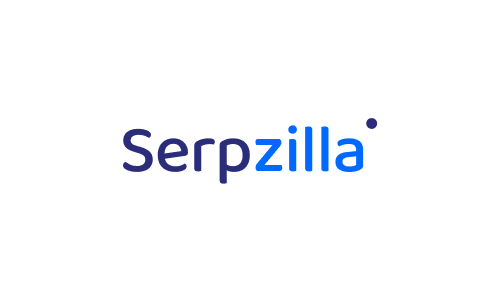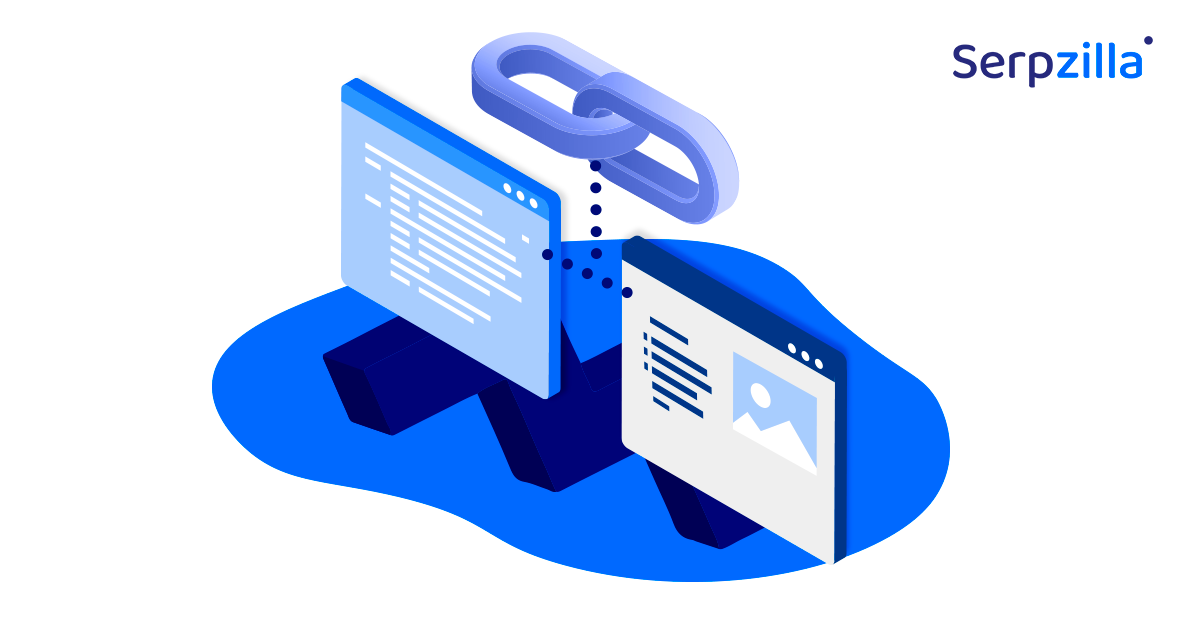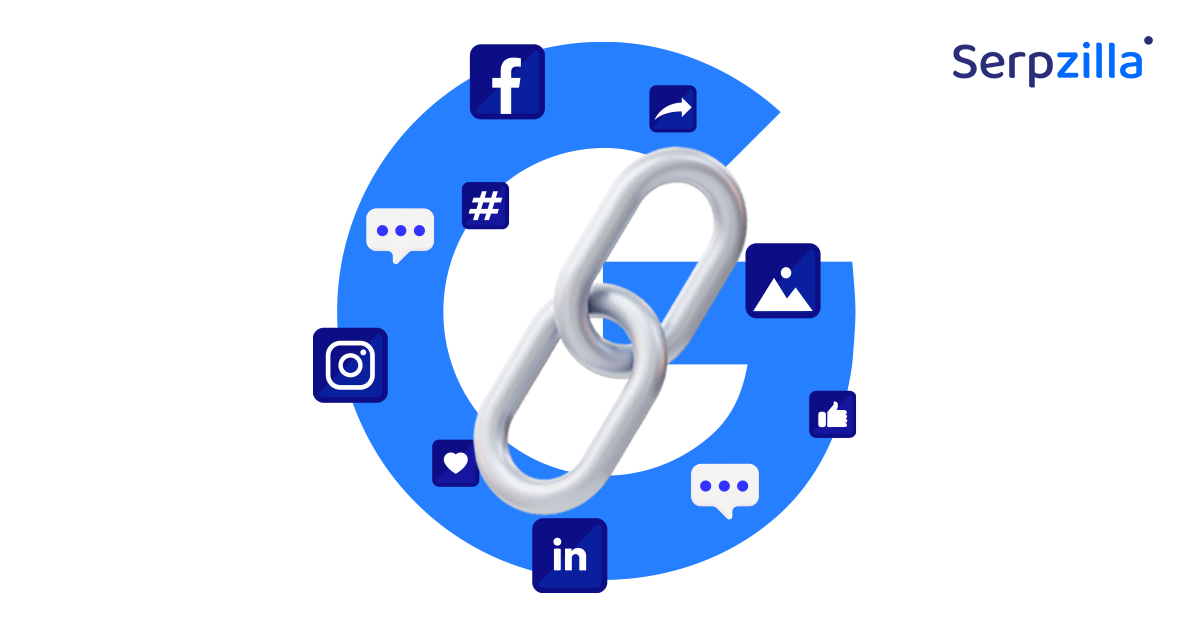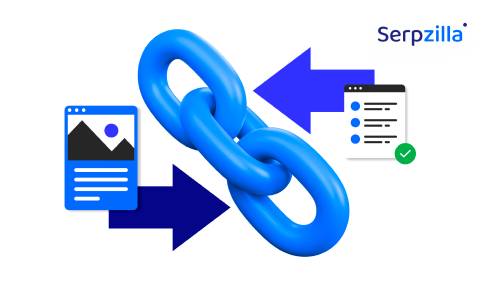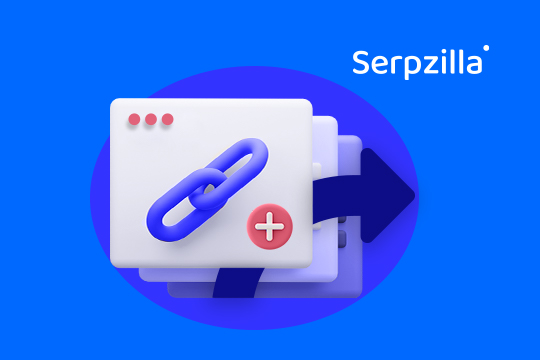AI Overviews and answer engines are hijacking discovery, and just getting more links won’t help you win it back. What works in 2026 is Generative Engine Optimization (GEO) for engineering the kind of links and on‑page context that AI can find and cite. These links combine authority, entity‑clean context, and situational relevance. In this article, you’ll learn how to build links for geo with a repeatable, effective workflow.
What Is GEO Link Building and Why It’s Crucial Today
GEO stands for Generative Engine Optimization. GEO link building, in its turn, means earning or placing backlinks that make your pages easier for answer engines (SGE, Perplexity, ChatGPT with browsing, Bing Copilot) to retrieve, rank, and cite. The best links play on three factors:
- Authority: trusted domains, editorial placements, news/media, associations.
- Entity and topical context: anchors and surrounding copy that map cleanly to the concepts on your page.
- Situational cues when relevant: language, audience, and locale/ccTLD for location‑intent queries.
Examples of GEO‑relevant backlinks
- A research outlet that cites your original dataset and links with a descriptive anchor to the exact section
- An industry resource hub that links to your content with anchors that match common question phrasings
- A regional publisher (when the intent is local) that references your city‑specific guide with natural anchors in the body text
GEO link building vs. traditional SEO backlinking
Traditional backlinking is usually after domain‑level authority and generic topical relevance. GEO link building targets retrieval relevance: links placed in context and pointing to chunk‑ready pages with clear structures that answer engines can cite.
Here’s a simple comparison table for you to understand the major differences:
| Factor | Traditional backlinking | GEO link building |
| Primary objective | Increase domain/page authority to climb classic SERPs. | Maximize retrieval and citation in AI answers. |
| Target selection | High‑DA sites with broad topical relevance. | Credible sources with topical/entity proximity. |
| Anchors and placement | Flexible anchors; bios, boilerplate, and sidebars are commonly used. | Natural, descriptive anchors in the body near relevant entities and claims. |
| Destination pages | Any relevant page or generic hubs. | Structured pages (clear H2/H3s, tables, FAQs, figures) with stable URLs and internal links to the answer section. |
How Link Building Influences AI Search and SGE Rankings
Links shape AI outcomes in several ways: they help get your pages discovered and kept in the index, they influence which passages are retrieved and selected for answers, and they affect whether (and how) you’re cited.
Let’s take a closer look at these processes.
The rise of GEO: Why links still matter
Answer engines now sit on top of classic ranking systems. Backlinks still signal credibility and importance by helping keep pages in working indexes and biasing retrieval toward sources the web already “vouches for.” In GEO, link strategy shifts from raw volume to context‑rich placements that make your entities and intents unmistakable.
How ChatGPT, SGE, and Perplexity choose sources (thanks to links)
Retrieval favors pages that look authoritative and contextually aligned with the user’s query or question. Links help both:
- Referring‑page context (anchor + surrounding copy) teaches systems what your target covers
- Referring‑site authority de‑risks citing you
On top of that, body‑copy placement increases the odds that the correct passage will be picked up by AI. Recent, fresh links make it more likely that AI tools and AI Overviews will include your content in later versions.
The role of links in passage chunking and citations
Indexes are passage‑based. Links won’t change chunk boundaries, but they raise eligibility for your best passages to be pulled and cited. Make your pages quote‑ready and point links to the sections that answer a discrete sub‑question.
Think of it as handing the engine a tidy, ready‑to‑quote snippet with your name on it. Short, self‑contained sections that carry a stat, definition, or step‑by‑step get picked up far more often than long, vague copy. Add a clear caption or label, and you’ve made the citation decision easy.
Authority, context, and topical proximity in AI models
Generative models like ChatGPT and Google’s SGE consider not only the presence of backlinks but also the contextual match between referring and target content.
Authority (credible sites linking to you), context (what the anchor and nearby text say), and topical fit (how close the linking page is to your subject) are the signals that matter most here. Authority lowers the risk of quoting you, context tells the system what your page actually answers, and topical fit confirms it’s the same topic as the query. That’s why engines read simple cues like bylines, references, and the words around the link, plus where the link sits on the page.
Pro tip: With tools like Serpzilla, SEOs can take advantage of two advanced features: Smart Topic Matching and Auto-Topic Filtering. Thanks to AI-powered Topic matching, your links are automatically placed in content that’s semantically close to your target page. With topic filters, you can make sure that the links sit in content that’s both credible and contextually spot-on. This ensures that every link contributes semantically and geographically to visibility in AI-powered engines.
Topic Filtering for guest posts in Serpzilla.
AI-powered Smart Topic Filter in Serpzilla.
AI Tools for Link Building and GEO Optimization
Before we go into detail discussing the best GEO optimization strategies, let’s take a look at the top five tools that will make this task much easier and effective.
1. Semrush Link Building Tool with AI insights
Link Building Tool’s Newly Acquired Backlinks report in Semrush. Source: https://www.semrush.com/kb/739-monitoring-your-newly-acquired-backlinks.
Semrush is one of the most complete backlink intelligence platforms. Its link-building tool now layers AI insights to surface the most relevant prospects by topic, country, and authority.
- Features: Backlink analytics, prospecting, country/TLD filters, link tracking.
- Best use cases: GEO gap analysis, referring domain quality control, lost link recovery.
- Pros: Deep data.
- Cons: Learning curve.
- Pricing: Starts around $129.95/month (Pro), $249.95/month (Guru), $499.95/month (Business).
2. ChatGPT for email pitching and contextual suggestions
A prompt in ChatGPT. Source: ChatGPT.com.
ChatGPT makes outreach faster by generating draft emails, subject lines, and personalized angles that match different editor personas. For GEO, it can also suggest entity‑rich phrasing and localized variations in your outreach, so your pitches line up with the exact queries engines are more likely to retrieve and cite.
- Features: Persona‑based drafts, angle ideation, entity‑clean outline help.
- Best use cases: Rapid pitching at scale without losing personalization.
- Pros: Fast and diverse.
- Cons: Requires human editing and fact checks.
- Pricing: Subscription. $20/month for ChatGPT Plus; enterprise API pricing varies.
3. Ahrefs for local/market‑aware backlink tracking
SEO metrics of a website URL in Ahrefs. Source: https://ahrefs.com/backlink-checker.
Ahrefs is best known for its massive backlink index and clear reporting. You can break down profiles by TLD, language, and anchor text, making it easier to see which sources are helping competitors get pulled into AI answers and where your own profile is thin.
- Features: TLD distribution, anchors, referring domains, change/lost reports.
- Best use cases: Visualizing referring domains mix; spotting market‑specific gaps.
- Pros: Excellent crawl.
- Cons: Usage limits by plan.
- Pricing: Starts at $99/month (Lite), $199/month (Standard), $399/month (Advanced), $999/month (Enterprise).
SurferSEO for entity optimization and internal linking
SurferSEO interface. Source: https://surferseo.com/.
SurferSEO is a content optimization tool with strong NLP entity analysis. It helps you build pages that cover entities that answer engines look for and suggest internal link structures.
- Features: NLP entity suggestions, competitor term coverage, internal link ideas.
- Best use cases: Making pages chunk‑ready and entity‑rich to attract citations.
- Pros: Clear guidance.
- Cons: Beware of over‑optimization.
- Pricing: Around $89/mo (Essential), $179/mo (Advanced), $299/mo (Max).
Serpzilla for smart, vetted placements and internal link guidance
Target website selection in Serpzilla. Source: https://serpzilla.com/blog/how-to-find-relevant-target-websites-for-link-building/.
Serpzilla is a great link-building platform that blends a vetted directory of link opportunities with filters, analytics, and campaign controls. You can browse pre‑approved placements, review domain health, and assess topical fit before you buy.
- Features: Marketplace with filters for topic, language, domain zone, pricing transparency; options for guest posts/link insertions/sponsored placements.
- Best use cases: Scaling context‑aligned placements; mirroring successful anchor/entity patterns when planning internal links.
- Pros: Speed and control
- Cons: Limited to sites in the platform’s inventory.
- Pricing: Pay‑per‑placement for guest posts and link insertion or a monthly subscription for rental links (niche edits and sitewide links).
10 Proven Link Building Strategies for GEO + AI SEO
Below are ten specific SEO moves tested in 2026 that map straight to how AI search and SGE judge authority, context, and relevance. Some rely on editorial weight, others on semantic clarity, and a few use smart tools to shortcut the repetitive work.
Use them individually or stack them together, depending on what GEO gap you need to close first.
1. Earn links from high‑authority, context‑aligned sites
- Why it works: Editorial links from trusted, topic‑relevant publications raise credibility and retrieval odds. In other words, AI will prefer your page as the safer, more credible source.
- How to do it: Pitch data‑backed articles, explainers, or checklists that fill a gap in the publisher’s coverage. Offer charts and quotes for better chances of being chosen. Use ChatGPT to speed up the pitching cycle.
To make the process much more efficient, use Serpzilla. Quickly sort link opportunities by domain metrics, topical category, language, and (if relevant) region. Build a batch of placements that reinforce the same entity cluster you want cited. This will make it much easier for your content to be discovered and picked by AI.
2. Optimize for contextual anchor text and semantic match
- Why it works: You already know that AI reads and analyzes anchor texts and surrounding copy. Natural, descriptive anchors that reflect how users phrase the question improve match quality. The more your anchor mirrors the actual wording of a query, the easier it is for engines to connect your page with that intent.
- How to do it: Define acceptable anchor variants per campaign and enforce body‑copy placement instead of footers or boilerplate.
3. Publish original research and data‑driven content
- Why it works: Primary data gets cited a lot by journalists, bloggers, and AI engines. When you’re the one with the numbers, people have no choice but to point back to you, and AI tools tend to favor the original source.
- How to do it: Put out small but credible datasets like surveys, benchmarks, or even a few fresh stats. Add charts, a short summary, and a clear methods note so it’s easy to trust and quote. Keep the numbers simple to lift and drop into an article or an AI snippet. Even a small, unique data point can get outsized attention if it fills a gap no one else has covered.
4. Leverage trusted local news outlets and media
- Why it works: Local media carry instant credibility. If your brand shows up in a city paper or an industry mag, it signals real‑world trust that both people and AI engines notice. Those mentions often ripple out: other sites pick them up, and suddenly your story is everywhere, attracting lots of traffic.
- How to do it: Keep a running list of reporters and outlets in your space. When you’ve got fresh data, a new angle, or even just a local twist on a bigger story, send it over with a quick one‑pager and a couple of quotable lines. Add region‑specific stats if you have them, and time it so you’re part of an active news cycle. Land one well‑timed media hit and you’ll usually get a wave of organic links plus a higher shot at being cited in AI answers.
5. Partner with directories and associations
- Why it works: High‑quality associations and curated directories add a layer of trust and visibility. They’re not flashy, but they show both users and engines that you’re recognized in your field, and they often rank well for industry‑specific queries.
- How to do it: Pick only reputable directories or associations that let you include a proper description, not just a bare link. Use Serpzilla’s filtering system to identify local directories and associations that accept backlink placements. You can filter for these listings, check cost‑per‑placement, and avoid low‑value link farms.
- Pro tip: Always label sponsored links and posts correctly and use them as a supplement to stronger editorial links. Don’t use them as a complete replacement.
6. Use schema markup to reinforce entity and context
- Why it works: Schema doesn’t give you rankings on its own, but it helps search systems and AI understand exactly what your page is about. Engines should clearly connect your brand, product, and content type to the right entity.
- How to do it: Add the basics like Organization, Product, FAQPage, Article, or LocalBusiness if it fits. Link those schemas to authoritative sameAs profiles (LinkedIn, Crunchbase, Wikipedia, etc.) and make sure your NAP and hreflang tags are consistent across pages. The cleaner your markup, the easier it is for AI to match your content to the right queries.
7. Contribute to niche blogs and podcasts
- Why it works: Blogs and podcasts already have an audience that cares about the topic, so you don’t need to fight for attention. A solid guest post or episode page usually comes with detailed show notes or long‑form copy, which makes for perfect spots for contextual anchors that engines notice and use.
- How to do it: Look for gaps in what these outlets are covering and pitch something fresh. Make it easy for the host or editor: outline the key points, prepare a couple of highlights, and share a simple takeaway list.
8. Acquire links from country‑code TLDs (.de, .ca, .fr) when intent is country‑specific
- Why it works: For searches locked to a country, ccTLDs and native‑language sites send a strong “this is local” signal. If someone in Germany searches for a local provider, a .de backlink in German looks way more credible to both users and AI algorithms than a .com with no local ties.
- How to do it: Filter links by ccTLD + language for the markets you’re after — it’s quick and easy to do with Serpzilla. Pair that with proper hreflang and localized landing pages so the signal is consistent. Don’t waste time chasing ccTLDs if the query has no geographic angle, though. It’s only worth it when the intent is clearly country‑bound.
9. Recover lost links with quarterly audits
- Why it works: Lost links are the proverbial low‑hanging fruit. If a link breaks or gets dropped, you’re losing equity you already earned. Fixing or restoring them is usually quicker and cheaper than building brand-new ones.
- How to do it: Run a lost links report every quarter. Group them by topic or market, then focus on restoring links that pointed to your most chunk‑ready pages. Reach out to the site, suggest a fresh link destination if needed, and reclaim the value instead of starting from scratch. Done!
10. Use AI to automate prospecting and outreach
- Why it works: AI takes the boring parts out of link building. It can scan huge datasets in seconds, flag patterns in who’s linking where, and help you prioritize the link placements that matter for GEO. Platforms like Serpzilla then let you act on those insights right away, no lengthy outreach processes.
- How to do it: Use AI to analyze competitor link data, cluster referring domains by topic/entity, and draft quick pitch angles. Then turn to Serpzilla to secure placements on vetted sites with clear pricing and turnaround. Together, they keep your link flow steady and free you up to focus on creating content worth citing.
FAQ on GEO Link Building and AI Search
Do AI systems evaluate backlinks like traditional crawlers?
Not directly, and yet links still matter. They influence discovery, inclusion, and which sources retrieval scorers view as credible enough to cite.
Can I use AI to fully automate link building?
You can safely automate research and drafting, but not editorial acquisition. Use platforms like Serpzilla for repeatable, transparent placements and pitch humans for news and feature coverage.
How do I track link impact on SGE/AI visibility?
Correlate new placements with changes in organic rankings, answer‑engine citations (log them), and engagement on your chunk‑ready pages. Review the data quarterly. You can use tools like Ahrefs Brand Radar to automate detection and easily assess your AI Share of Voice and the general AI search visibility across the web.
Ahrefs Brand Radar
The trick is to line up link dates with performance shifts. Did traffic jump a week after that link went live? Did your page start appearing in AI snippets once a certain domain pointed to you? Keep notes, look for patterns, and you’ll quickly see which links are making the difference.
Should I build different links for AI search engines?
Not really. You don’t need a whole new kind of backlink strategy just because AI is in the mix. What works is sticking to quality: links from credible sites, placed in a clear context, pointing to pages that are easy for engines to read and quote. Add local signals only if the search itself is clearly local.
Conclusion: Smarter Link Building for the AI-Driven Future
With AI answers and SGE sitting on top of search, you need backlinks that speak clearly about your authority and your topics, not just your domain score. The goal of GEO link building is to make those signals unmistakable.
The process has changed, but it’s pretty simple. Go after links that add context, show authority, and connect directly to the entities you want to own. Run audits, restore lost links, and keep an eye on which link placements consistently push you into AI snippets.
Pick one simple move to act on right away: maybe restore a lost link, test a Serpzilla placement, or add schema to a key page. Then watch what happens in both rankings and AI answers. Small, focused steps like this make GEO less overwhelming and help you see real wins faster.



